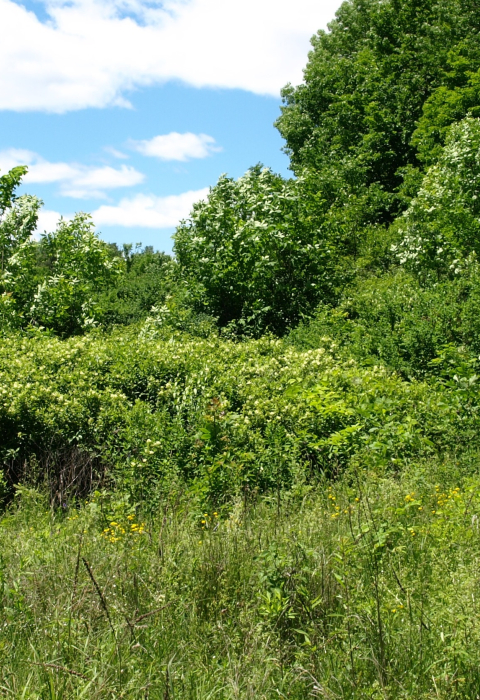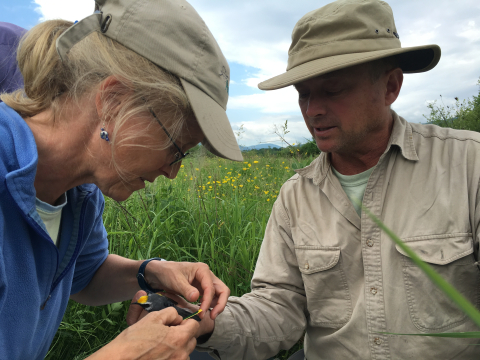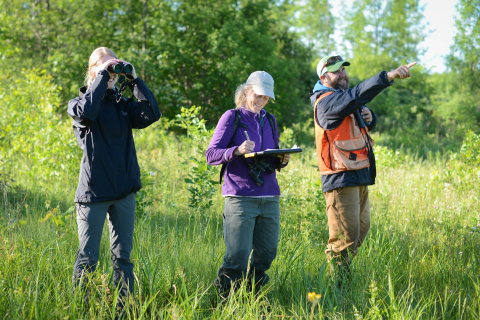Conservation Organization Project
“Good golden-winged warbler habitat has clumps of native shrubs near mature forest,” notes Mark LaBarr of Audubon Vermont. At Buckner Preserve, Audubon Vermont works with The Nature Conservancy, which owns the preserve, to create and improve habitat for warblers and other wildlife.
Buckner Preserve takes in 3,791 acres in Vermont and adjacent New York. Murray McHugh, The Nature Conservancy’s Critical Lands Manager for southern Vermont, calls it “the Conservancy’s most biologically diverse natural area in the state.”
A Warbler in Trouble
The golden-winged warbler population has fallen in recent years. A major reason is an ongoing decline in the amount of young forest and shrubland. Such habitat vanishes when trees naturally succeed shrubs, and when young forest becomes older forest, shading out lower growth.
Golden-winged warblers require shrubland to breed. After young leave the nest, they shift to feeding in mature forest (the reverse of what many other songbirds do).
Buckner Preserve supports the highest concentration and largest remaining population of golden-wings in Vermont, as well as closely related blue-winged warblers. Other young forest birds at Buckner include whip-poor-wills, American woodcock, indigo buntings, brown thrashers, field sparrows, and prairie warblers.
On 16 management units totaling 185 acres, large machines, chainsawing, and brush-hogging keep thickets of native shrubs at an optimum density and remove invasive shrubs. Another 80 acres of old hayfields are being transitioned into healthy shrubland. Says LaBarr: “Our goal is to encourage a native shrub community and to create patchiness in the shrubs’ overall growth pattern.” Shrubland exists near the mature forest stands to which golden-wings resort following nesting.
Research is Part of the Program
In tandem with habitat improvements, biologists monitor golden-winged warblers at Buckner. They capture adult birds, record data on their weight and health, and attach tiny geolocator units that track the birds as they fly south to Central and South America in autumn, documenting migration routes and important habitats the birds use en route to their wintering grounds.
Researchers with Vermont Fish and Wildlife Department and the University of Maine capture American woodcock on Buckner and outfit them with radio trackers as part of a large study of woodcock migration in eastern North America. The Vermont Center for Ecosystem Studies is examining how whip-poor-wills use shrubland at Buckner.
How to Visit
Shrubland managed for golden-winged warblers and other wildlife can be visited via Tim’s Trail off Galick Road. See this trail map.



